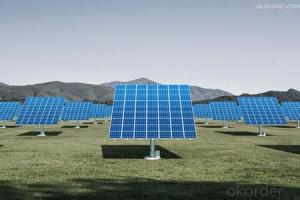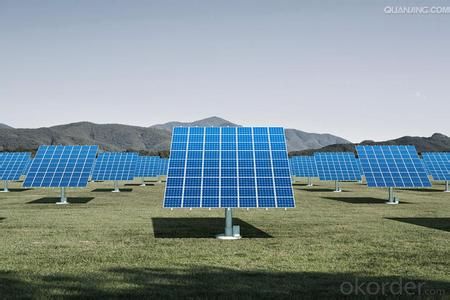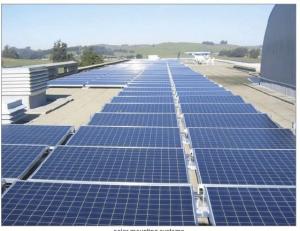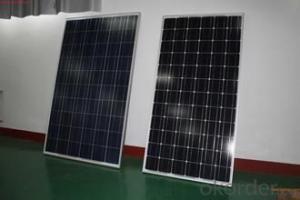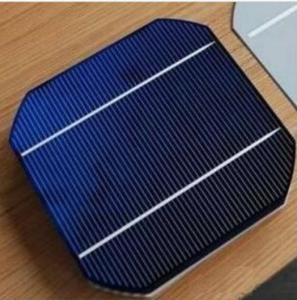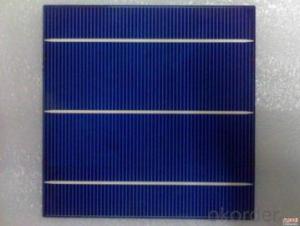Stacked Monocrystalline Silicon Solar Cells
- Loading Port:
- China Main Port
- Payment Terms:
- TT OR LC
- Min Order Qty:
- -
- Supply Capability:
- -
OKorder Service Pledge
OKorder Financial Service
You Might Also Like
Quick Details
| Model Number: | |||||
| Material: | Size: | Number of Cells: | |||
| Max. Power: |
Packaging & Delivery
| Packaging Detail: | carton and pallet |
| Delivery Detail: | 30days |
Specifications
1. monocrystalline silicon solar cells,monocrystalline silicon solar module,pv cell modules
2. Power rang :320 to 480wp
monocrystalline silicon solar cells,monocrystalline silicon solar module,monocrystalline silicon pv cell modules
1. Power rang :5wp to 280 wp per panel;
2. mono crystalline or poly crystalline;
3. certitication: CE , IEC , TUV, certificate, and so on.
4. With advanced materials and equipments, our modules are designed and manufactured in consistency with the IEC 61215:1993 standards which can guarantee excellent electrical performance and the product life span of 25 years.
5. A film of PECVD is coated on the upper surface as antireflection measure which the characteristic of deep blue color.
6. The modules are embedded with a sheet of imported strong transparent glass, two sheets of long endurance EVA, a high efficiency mono-crystalline cells sheet and a sheet of antihumidity TPT for different weather conditions.
7. High quality anodized aluminum frame which is the choice for strong wind resistance and mountain terrain.
8. A multifunction box can safeguard safe connection.
9. The exterior design and electrical performance of each every module are fully tasted to guarantee superior quality.
Model | Solar Module | Inverter | Charge Controller | Storage Battery | Daily Generated Energy(Wh) | |||
| Quantity (pc) | Specr. (wp) | Power (W) | DC/AC | Voltage/Current | Quantity (pc) | Cap./pc | ||
| PV320 | 4 | 80 | 1000 | 12Vdc/220Vac | 57.6V/10A | 4 | 12V/80Ah | 1360 |
| PV400 | 4 | 100 | 1000 | 12Vdc/220Vac | 57.6V/10A | 4 | 12V/100Ah | 1700 |
| PV480 | 4 | 120 | 1000 | 12Vdc/220Vac | 57.6V/10A | 4 | 12V/120Ah | 2040 |
when storage battery is fully charged,and all possible loads are in use. | ||||||||
- Q: Can solar cells be used in ski resorts for snowmaking?
- Yes, solar cells can be used in ski resorts for snowmaking. Solar cells can generate electricity from sunlight, which can then be used to power the snowmaking equipment. This can help reduce the reliance on fossil fuels and contribute to a more sustainable and environmentally friendly snowmaking process.
- Q: How do people price solar cells? Is it based on a specific way of calculating the cost of solar cells?
- According to our calculation the solar power cost around US$230 per square meter is it can generate 120W power supply per square meter.
- Q: How do solar cells perform in regions with high levels of air pollution?
- Solar cells generally perform less efficiently in regions with high levels of air pollution. Air pollution can block sunlight and reduce the amount of light reaching the solar cells, thereby reducing their performance. Additionally, pollutants in the air can settle on the surface of the solar cells, forming a layer of dust or dirt, which further reduces their efficiency. Regular cleaning and maintenance of solar panels are necessary in polluted regions to ensure optimal performance.
- Q: Can solar cells be used for powering streetlights?
- Yes, solar cells can be used for powering streetlights. Solar-powered streetlights are a sustainable and cost-effective solution that harnesses the energy from the sun using solar cells to generate electricity, making them independent of the power grid. This helps in reducing energy consumption and minimizing carbon emissions.
- Q: Can solar cells be used in areas with high pollution?
- Yes, solar cells can be used in areas with high pollution. However, it is important to note that pollution can have a negative impact on the efficiency and performance of solar cells. Airborne pollutants, such as particulate matter and smog, can reduce the amount of sunlight reaching the cells, thereby decreasing their output. Regular maintenance and cleaning may be required to ensure optimal performance in polluted environments. Additionally, advanced solar cell technologies and designs are being developed to mitigate the effects of pollution and improve their efficiency in such areas.
- Q: Briefly explain why solar cells are made into components
- The electrical performance parameters of solar cells are: voltage, current, capacity, type, charging rate and so on. The voltage parameter of the battery refers to the operating voltage of the battery, that is, the voltage that can be supplied to the device. Current, refers to the maximum discharge current of the battery. Capacity, refers to the total discharge power of the battery, with An / hour (A / H) said.
- Q: What is the role of solar cells in powering agricultural irrigation?
- Solar cells play a crucial role in powering agricultural irrigation as they convert sunlight into electricity, providing a renewable and sustainable energy source. By harnessing solar power, farmers can operate irrigation systems efficiently, reducing reliance on fossil fuels and minimizing carbon emissions. This enables them to irrigate crops effectively, improving yields and ensuring sustainable agricultural practices.
- Q: What are the different sizes of solar cells?
- Solar cells come in various sizes, ranging from small ones typically used in calculators and devices, to larger ones used in residential and commercial applications. The sizes of solar cells can vary depending on the specific purpose and power output required.
- Q: Can solar cells be used on road surfaces?
- Yes, solar cells can be used on road surfaces. Solar road technology, also known as solar roadways, involves embedding solar panels into roadways to generate electricity. These solar panels are designed to withstand the weight of vehicles and can be used to power streetlights, traffic signals, and even electric vehicles. However, there are challenges to overcome, such as durability and cost-effectiveness, before widespread implementation can occur.
- Q: How much electricity can a solar cell generate?
- The amount of electricity that a solar cell can generate depends on various factors such as the size of the cell, the efficiency of the cell, the intensity of sunlight, and the duration of exposure. Generally, a solar cell can produce anywhere from a few watts to several hundred watts of electricity.
Send your message to us
Stacked Monocrystalline Silicon Solar Cells
- Loading Port:
- China Main Port
- Payment Terms:
- TT OR LC
- Min Order Qty:
- -
- Supply Capability:
- -
OKorder Service Pledge
OKorder Financial Service
Similar products
Hot products
Hot Searches
Related keywords
